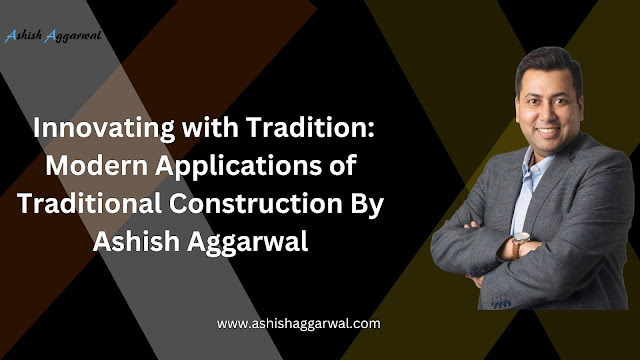In a rapidly evolving world, where cutting-edge technologies often take center stage, there is a growing appreciation for the time-tested wisdom of traditional construction techniques. As we strive for sustainability and seek to reduce our environmental impact, there’s a renewed interest in blending the best of both worlds – marrying heritage craftsmanship with modern innovation. In this article, Ashish Aggarwal will shed a light on how traditional construction methods are being reimagined and brought into the 21st century, transforming the way we build our structures.
Preserving the Past, Building the Future:
Traditional construction techniques have withstood the test of time for a reason. Passed down through generations, they reflect a deep understanding of materials, climate, and craftsmanship. Today, architects and builders are tapping into this wealth of knowledge to create structures that are not only aesthetically pleasing but also environmentally conscious and sustainable.
Adapting Materials for Modern Needs:
One of the key aspects of innovating with tradition lies in the selection and adaptation of materials. Natural materials like adobe, rammed earth, and bamboo, which have been used for centuries, are finding new life in contemporary construction. Through advancements in engineering and processing, these materials are being reinforced and modified to meet modern structural demands while retaining their eco-friendly characteristics.
Revitalizing Vernacular Architecture:
Vernacular architecture, rooted in local traditions and materials, is experiencing a resurgence. Architects are drawing inspiration from regional building styles to create designs that harmonize with the natural environment. By incorporating elements like courtyards, natural ventilation, and passive cooling techniques, modern structures pay homage to their cultural and environmental context.
Balancing Tradition and Technology:
While tradition provides a solid foundation, modern technology offers a wide array of tools to enhance construction practices. From 3D modeling and virtual reality simulations to advanced robotics and drones, these innovations are being integrated to improve precision, efficiency, and safety in construction projects. By marrying tradition with technology, we can achieve results that are both authentic and forward-thinking.
To get a proper guidance on how to maintain a balance between tradition and technology contact Ashish Aggarwal Acube Ventures.
Sustainability as a Driving Force:
Sustainability is at the heart of the movement to innovate with tradition. By leveraging renewable energy sources, implementing rainwater harvesting systems, and adopting zero-waste construction practices, builders are creating structures that minimize their environmental footprint. This approach not only benefits the planet but also leads to long-term cost savings for owners.
Conclusion:
Innovating with tradition is not about clinging to the past, but rather about recognizing the enduring value of time-honored practices. By integrating the wisdom of our ancestors with the advancements of today, we have the opportunity to create a built environment that respects tradition, embraces sustainability, and meets the needs of a rapidly changing world. As pioneers in this movement, companies like ACube Ventured Global Pvt. Ltd. which is built by Ashish Aggarwal are leading the way, demonstrating that the fusion of heritage and modernity is the path to a more harmonious and sustainable future.


Comments
Post a Comment